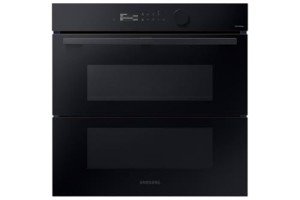Self-Cleaning Oven Maintenance: A Comprehensive Guide
Self-cleaning ovens have actually become a staple in numerous modern kitchens, providing homeowners a hassle-free method to keep their ovens clean with minimal effort. While Self Cleaning Oven Maintenance minimizes the time and energy invested in oven maintenance, correct care is vital to make sure the appliance operates efficiently and lasts for many years. This short article will check out vital maintenance practices, typical concerns, and tips for optimizing the effectiveness of self-cleaning ovens.
Comprehending Self-Cleaning Ovens
Self-cleaning ovens use heats-- typically between 800 ° F and 1,000 ° F-- to incinerate food residues and grease, leaving only ash. This process eliminates the requirement for chemical cleaners and labor-intensive scrubbing, making it a popular choice for busy house owners.
Types of Self-Cleaning Ovens
Pyrolytic Self-Cleaning Ovens:
- These ovens can reach high temperature levels to burn food residues.
- They typically require users to set a self-cleaning cycle, which lasts in between 2 to 4 hours.
Steam Cleaning Ovens:
- These models use water vapor to assist loosen gunk and baked-on food.
- The cleaning process is generally faster and does not need high heat.
Table 1: Comparison of Self-Cleaning Oven Types
| Function | Pyrolytic Cleaning | Steam Cleaning |
|---|---|---|
| Cleaning Temperature | 800 ° F | to 1,000 ° F |
| As much as 250 ° F Period of Cleaning Cycle | 2 to 4 hours | 30 minutes to 1 hour |
| After-Cleaning Cooling Time | Needs cooling | No cooling needed |
| Chemical Use | None; high heat only | Minimal, if any |
Routine Maintenance Tips
While self-cleaning ovens are created to clean themselves, routine maintenance will ensure they continue to perform effectively. Below are essential tips for keeping a self-cleaning oven:
1. Clean Regularly
- Clean spills and splatters as soon as the oven cools off.
- Use a wet cloth to get rid of food residues that may burn throughout the self-cleaning cycle.
2. Utilize the Self-Cleaning Feature Wisely
- Limit the variety of self-cleaning cycles. A lot of producers suggest using this function no greater than as soon as every 3-6 months.
- Pre-clean the oven by removing big food particles or burnt-on grease before starting the self-cleaning process.
3. Examine Seals and Gaskets
- Examine the oven door seals and gaskets regularly for signs of wear or damage.
- Change any used parts to prevent heat loss throughout cleaning and cooking.
4. Prevent Heavy Buildup
- Make sure that the oven is not strained with heavy spots and residues before triggering the self-cleaning cycle.
- For incredibly filthy ovens, consider doing a manual clean before utilizing the self-cleaning function.
5. Ventilation
- Ensure excellent ventilation in the cooking area throughout the self-cleaning cycle. Heats can produce smoke and odors.
Common Issues
Despite their benefit, self-cleaning ovens can provide some difficulties. Here are typical problems and their solutions:
- Error Codes: If the oven displays an error code, refer to the user manual for fixing actions.
- Scorched Smell: This is regular throughout the self-cleaning cycle due to the high temperatures. Nevertheless, a relentless burnt smell after cleaning may suggest a breakdown.
- Sticky Door Lock: If the oven door does not unlock after a cleaning cycle, it might require a reset. Await the oven to cool down before attempting to unlock.
Often Asked Questions (FAQs)
1. Can I use my oven while it's in a self-cleaning cycle?
No, the oven door will instantly lock during the self-cleaning cycle for safety reasons. It is essential to wait until the cycle is completed and the oven cools before opening the door.
2. How frequently should I run the self-cleaning cycle?
It is normally recommended to run the self-cleaning cycle every 3 to 6 months, depending on your oven use. Self Cleaning Oven Features can speed up wear and tear.
3. What maintenance do I need to do before a self-cleaning cycle?
Before starting the self-cleaning cycle, get rid of any large food particles and use a wet fabric to clean down the interior surfaces. This assists guarantee more efficient cleaning and minimizes smoke.
4. Is it safe to leave racks in the oven during the self-cleaning cycle?
Most producers suggest removing the racks, as the high heat can cause discoloration or damage to the racks with time.
5. What should I do if my oven doesn't clean properly?
If the self-cleaning cycle does not work as meant, examine for blockages in the oven or consult the producer's troubleshooting guide for solutions.
Self-cleaning ovens are a fantastic improvement in kitchen technology, making the tough task of cleaning more manageable. Nevertheless, proper maintenance and understanding of how the self-cleaning function works can improve the longevity and functionality of the home appliance. By incorporating regular checks and routine maintenance, house owners can enjoy the benefits of a clean oven without the inconvenience. Whether it's through pyrolytic or steam cleaning techniques, preserving a self-cleaning oven is not just about convenience however likewise about ensuring a safe and efficient cooking experience.

